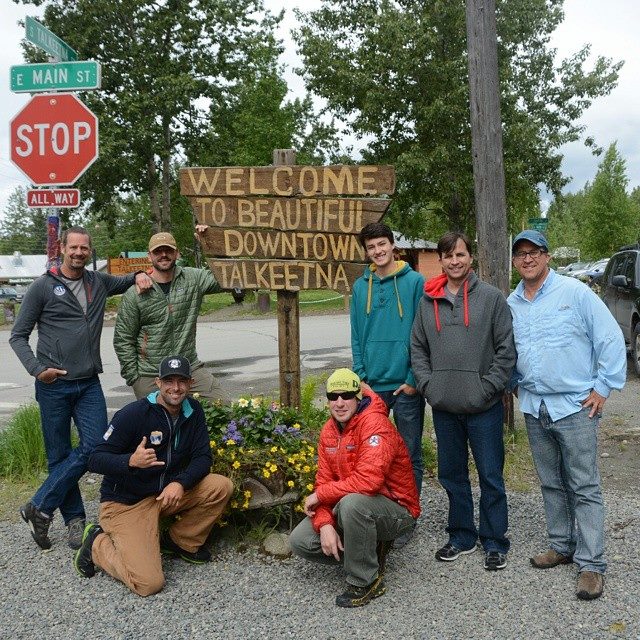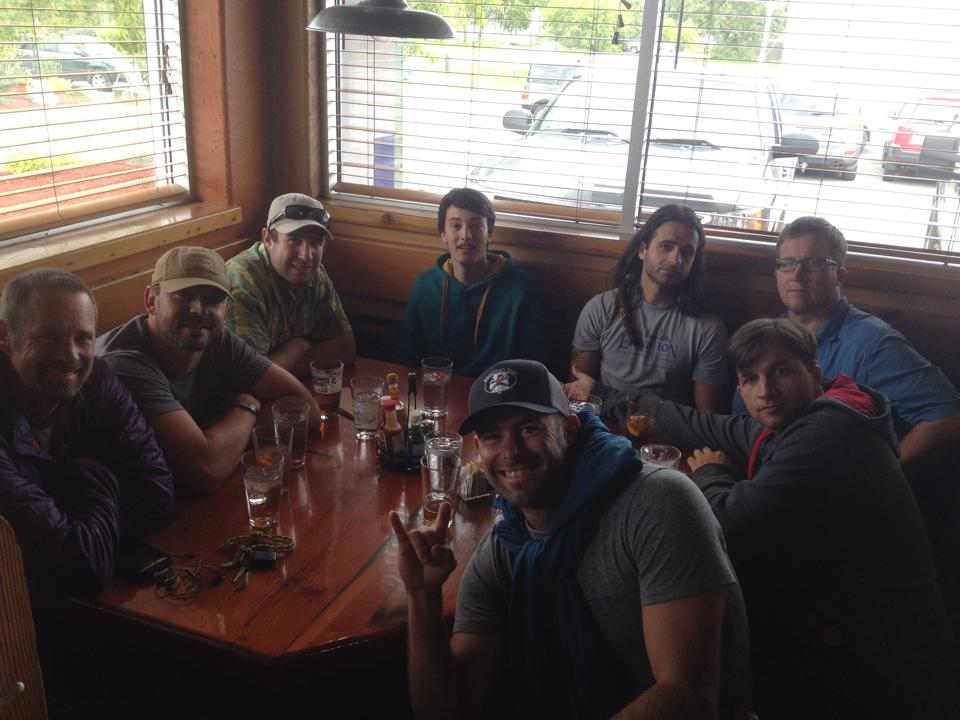
The Widow's Tears looking in great shape from the Pohono Bridge in Yosemite Valley on January 14, 2013 one day before Trevor, Kevin, and Kurt climbed it.
On Tuesday January 15 Trevor Anthes, Kevin Daniels, and SMI founder Kurt Wedberg climbed the Widow’s Tears in Yosemite Valley, the longest continuous ice climb in the contiguous 48 states. This ice formation located near Sentinel Rock needs a special combination of cold temperatures and ample running water to completely form ice from top to bottom. This only happens once every few years. The recent cold snap in the Sierra created ideal conditions for this climb to form.
Anthes, Daniels, and Wedberg are all Bishop residents and long time friends. Trevor is a professional photographer (www.wildincognito.com) and manages the Mammoth Gear Exchange located on Main Street next to the SMI office in Bishop, Kevin is the CEO of Fixe Hardware, and Kurt runs SMI. Hearing that the Widow’s Tears had formed they dropped everything, packed their ice climbing gear, and made the long drive from Bishop to Yosemite Valley on January 14. Colin and Molly Broadwater, founders of Bishop Crossfit where Kurt and Kevin train, closed the gym on Sunday while attending a conference on strength and conditioning. For the workout of the day they posted “No classes for the people of CrossFit Bishop!!! Git yourself outside and do something worth writing home about…”. Although two days late this mission was accomplished!
The trio arrived in Yosemite Valley on Monday afternoon in time to scope out the route and make a plan. The forecast called for temperatures to drop to the single digits that evening and warm to 34 degrees on the Valley floor the following day. Higher up in the shady gully where the climb is located temperatures should remain cold keeping the ice in perfect shape for climbing. When temperatures warm up higher than freezing the ice conditions start to deteriorate. The plan would be to get an early start and climb efficiently.
Approaching the climb by headlamp the team reached the bottom where they put on crampons, helmets, and climbing harnesses and began climbing at 5:45am. Finding the ice in good shape Trevor took off on the first lead of the day and climbed efficiently over a curtain of ice and set up a belay on a ledge. Kevin and Kurt followed then made their way over a snowy ledge to where the rest of the climb would continue. As Kevin began leading the second pitch it was just starting to get light enough to see without needing headlamps. A “pitch” is a rope length of climbing. Their ropes were 60m/198′ long. The team’s strategy was to try and maximize each pitch using as much of the rope as possible while doing their best to find comfortable places to set up belay stances making it easy to rest while the leader climbed the next section of the route.
Kurt led the 3rd and 4th pitches. Picking his way up the terrain he found a mixture of solid ice with a few hollow sounding spots which are to be avoided. Careful route finding kept the team on good ice and got the team to the base of pitch #5. Here the climb steepened where the ice was formed over a large almost vertical rock slab. The team called pitch #5 “the money pitch”. Kevin brilliantly led this long sustained section. At the top he placed a secure anchor using three ice screws and belayed Trevor and Kurt up.
It was now Trevor’s turn to take the sharp end and lead pitch #6 that climbed over ice that started off steep then gradually backed off as it reached a ledge offering an excellent place for the team to take a short break for food and water.
Looking at the terrain above it appeared it would be two full 60m pitches to the top. Kurt led pitch #7 which turned out to be almost as steep as pitch #5. It was now mid afternoon and nearing the top of the climb the team found water dripping over the ice on parts of the route. This didn’t prove to be a safety concern. Air temperatures remained cold and this water was flowing from above where it was warmer. It was however enough water to soak team member’s gloves. Thankfully the team was prepared with spare pairs to keep their hands warm. With rope running out near the top of pitch #7 Kurt spied a ledge 10′ above him. He yelled down to Kevin and Trevor asking if he had enough rope to get there. He managed to get to this tiny ledge with no rope to spare then set up a belay to bring the other two up. By running this pitch out as far as possible it also assured Kevin would be able to reach the top when he led pitch #8.
Kevin efficiently led the final pitch over a mix of steep terrain, wet ice, and finally loose snow leading to a large tree where he set up an anchor to belay Trevor and Kurt up. Reaching the top of the climb the team exchanged “high fives” for a job well done on a rare climb with a beautiful backdrop of the late afternoon alpenglow on the 3000’+ face of El Capitan.
A few pictures are below. The entire photo gallery can be found here:
Widow’s Tears January 15, 2013

Kevin and Trevor with binoculars in hand scoping out the Widow's Tears on January 14.

Trevor with a pre dawn start begins pitch #1.

Kevin placing an ice screw leading pitch #2.

Kevin pondering some of his last moves high up on pitch #2.

Looking above at pitches #4 and #5.

Kevin climbing pitch #4.

Kurt and Trevor at the belay ledge at the start of pitch #5.

Kurt organizing rope while Kevin racks up at the start of pitch #5.

Kevin leading pitch #5. This proved to be the steepest part of the route. The team referred to this section as "the money pitch".

Kevin belaying Trevor on pitch #6.

Trevor climbing above a freshly placed ice screw on pitch #6.

Trevor belaying Kevin near the top of pitch #6.

Kevin topping out on pitch #7 with Trevor climbing behind.

Trevor approaching the small belay ledge at the top of pitch #7.

Trevor is all smiles at the belay ledge on pitch #7.

Kevin geared up and ready to start leading pitch #8.

Kevin leading pitch #8, the final pitch that ended at the large tree above right.

Trevor and Kevin psyched as they untie from their ropes at the top of Widow's Tears.

Afternoon alpenglow on El Capitan from the top of Widow's Tears.
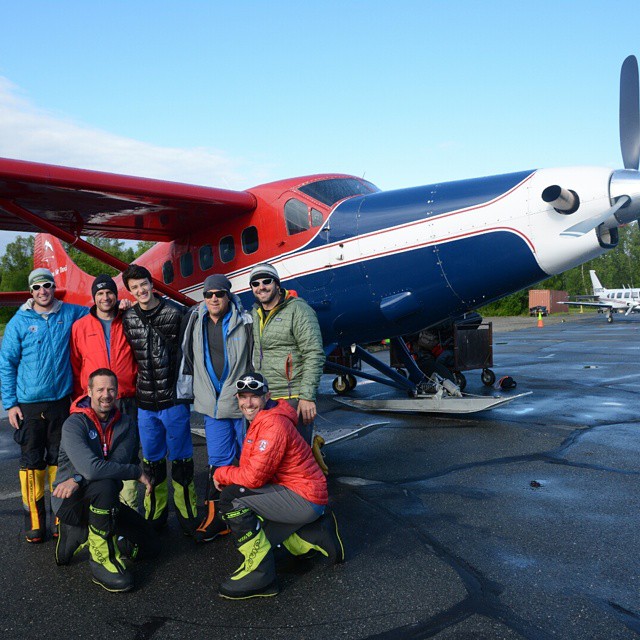
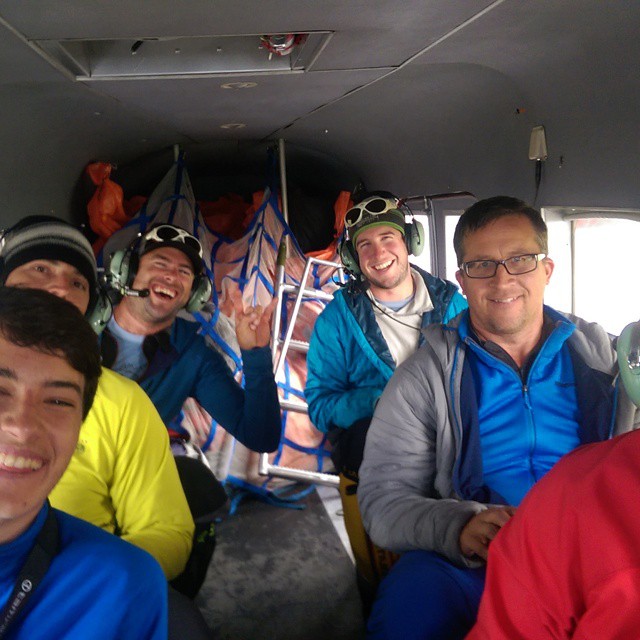
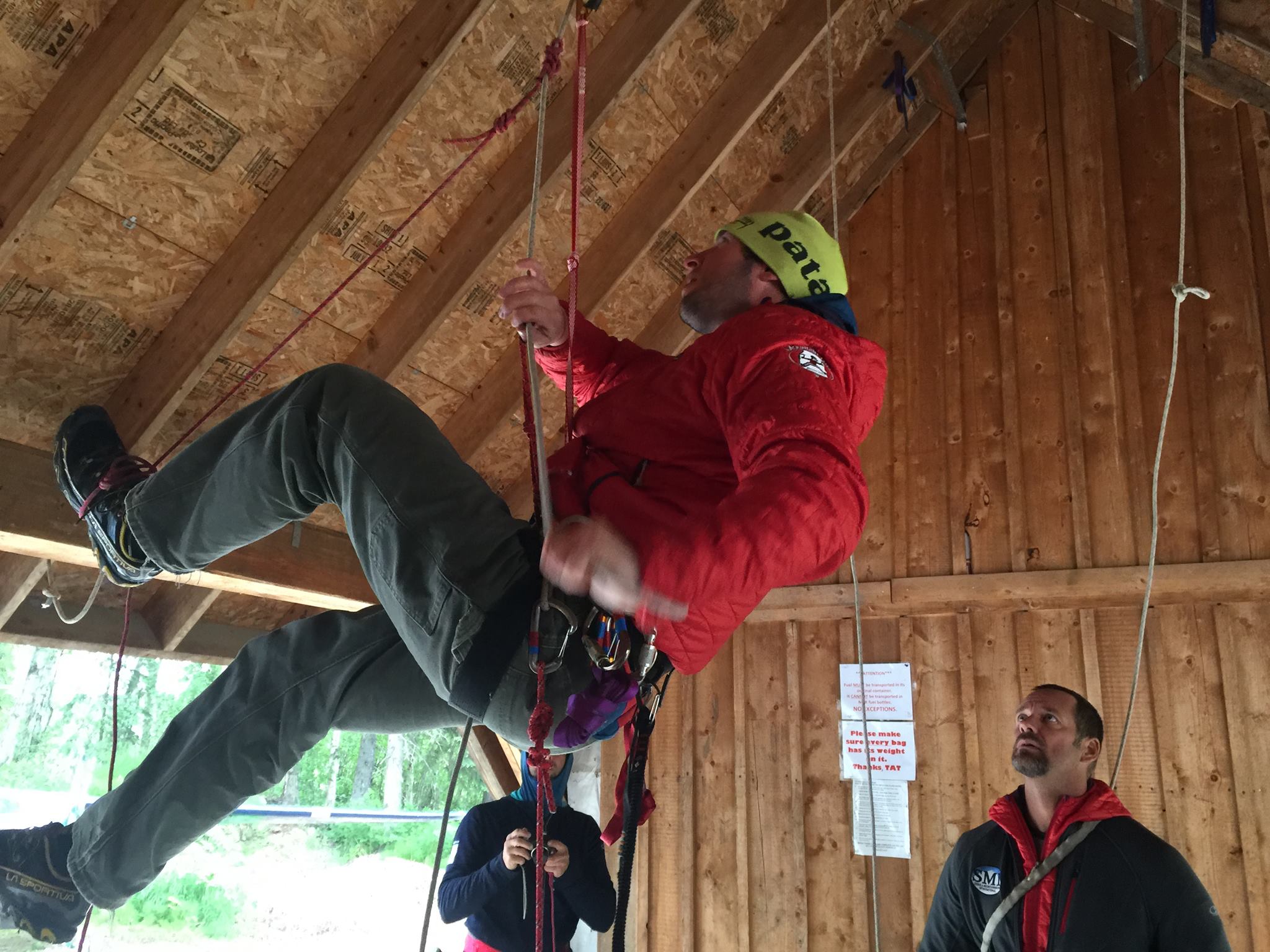 The group is currently at Base Camp 7,200 ft. Next they will be packing and prepping to make the trek to Camp 1.
The group is currently at Base Camp 7,200 ft. Next they will be packing and prepping to make the trek to Camp 1.
